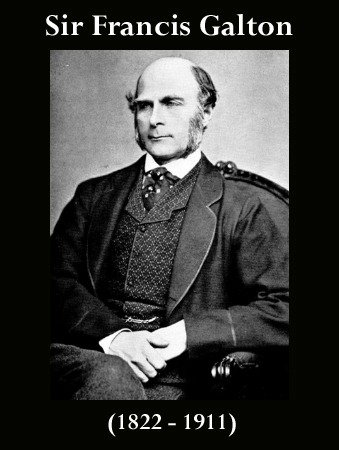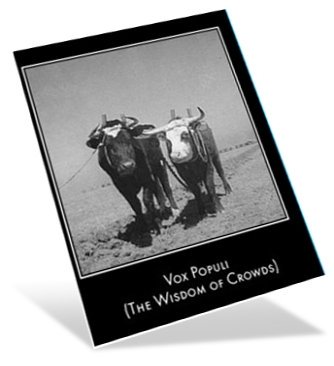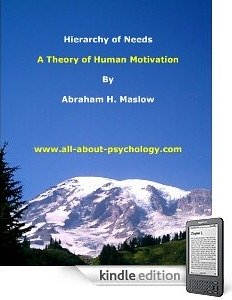|
Francis Galton Psychology
Thinking About Becoming A Psychology Student?
Find A Psychology School Near You
Francis Galton Psychology
Some people are just inherently interesting (pun intended) and you want to learn more about them and what they had to say - Francis Galton (1822 - 1911) is one such person. A highly regarded Victorian polymath, Galton published hundreds of works across a remarkable range of topics. For instance, he was the first person to study the science of fingerprints. He was also the first person to produce a public weather map in 1875, which was published in the Times newspaper. Although Galton's work on inheritence and the concept of eugenics is probably his most lasting and controversial legacy; Steve Jones professor of genetics at University College London notes that "the most important part of Galton's work had nothing to do with eugenics, for he was one of the first to realise that science - biology as much as physics - needs maths rather than words. He was one of the founders of the science of statistics, and he measured many things." He also made lots of interersting, quirky and sometimes downright bizarre contributions to psychology; and that will be our focus here on the All About Psychology website. As a case in point We'll begin with a short article by Galton which was first published in psychological review in 1894; the basis of which according to Galton was an attempt to assure himself that arithmetic could be performed by the sole medium of imaginary smells! Arithmetic By SmellIt seems worth while to put a few simple experiments on record, which I made for my own satisfaction a few months ago, in order to assure myself that arithmetic may be performed by the sole medium of imaginary smells, just as by imaginary figures or sounds. I had first to familiarize myself with a variety of scents, for which purpose the following arrangement was provided. Each scent was poured profusely upon cotton wool, loosely packed in a brass tube 8/4 inch in outside diameter, which had a nozzle at one of its ends. The other wide-open end of the brass tube was pushed into a tightly fitting piece of caoutchouc tubing, 4 and a half inches long, and the opposite end of the tubing was stopped with a cork. Whenever the tubing is grasped by the hand, a whiff of scented air is forced through the nozzle; when the grasp is relaxed, fresh air enters through the nozzle and passing through the wool becomes quickly impregnated with scent. The apparatus is then ready to be used again. Whiffs of scented air may thus be sent out four or five times in moderately quick succession and be almost equally odorous throughout. In using the apparatus, I begin by breathing out slowly through the nose, to prevent any scent from being prematurely perceived; in the mean time the nozzle is brought below the nostrils. Then I simultaneously give a sudden grasp and a sudden sniff up. A separate apparatus is used for each scent. They are made as alike as possible, and are scarcely distinguishable; nevertheless it is well to operate with the eyes shut. The scents chiefly used were peppermint, camphor, carbolic acid, ammonia, and aniseed. I taught myself to associate two whiffs of peppermint with one whiff of camphor; three of peppermint with one of carbolic acid, and so on. Next, I practised at some small sums in addition; at first with the scents themselves, and afterwards altogether with the imagination of them. There was not the slightest difficulty in banishing all visual and auditory images from the mind, leaving nothing in the consciousness besides real or imaginary scents. In this way, without, it is true, becoming very apt at the process, I convinced myself of the possibility of doing sums in simple addition with considerable speed and accuracy solely by means of imaginary scents. Further than this I did not go, so far as addition was concerned. It seemed a serious waste of time to continue the experiments further, because their difficulty and complexity rapidly increased. There were also provoking lapses of memory. For instance, at the present moment, having discontinued the experiments for three months, I find my old lessons almost wholly forgotten. Few persons appreciate the severity of the task imposed on children in making them learn the simple multiplication table, with its 81 pairs of values each associated with a third value. No wonder that they puzzle over it for months, notwithstanding the remarkable receptivity of their fresh brains. I did not attempt multiplication by smell. Subtraction succeeded as well as addition. I did not go so far as to associate separate scents with the attitudes of mind severally appropriate to subtraction and addition, but determined by my ordinary mental processes which attitude to assume, before isolating myself in the world of scents. Few experiments were made with taste. Salt, sugar, citric acid, and quinine seemed suitable for the purpose, and there appeared to be little difficulty in carrying on the experiments to a sufficient extent to show that arithmetic by taste was as feasible as arithmetic by smell. Other Francis Galton Psychology ContributionsVox Populi (The Wisdom of Crowds)
Find out how the statistical analysis of an ox weight guessing contest at a farmers' fair in Plymouth demonstrated that the many are smarter than the few. You can read this Francis Galton psychology classic via the following link.
Classic Articles All Psychology Students Should Read
This special Kindle collection consists of the most influential, infamous and iconic research articles ever published in the history of psychology. See following link for full details. See following link for full details. Go From Francis Galton Psychology Back To The Home Page
|


